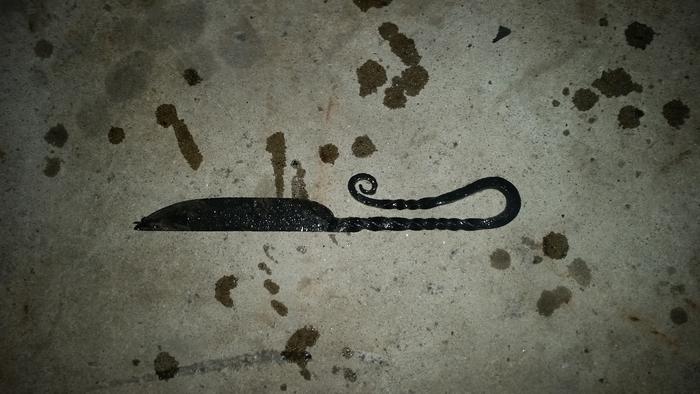Results 11 to 19 of 19
Thread: Knife making!
Threaded View
-
07-10-2016, 04:46 AM #1Senior Member



- Join Date
- Dec 2014
- Location
- Virginia, USA
- Posts
- 2,224
Thanked: 481 Knife making!
Knife making!
One of my friends decided to start his own blacksmithing shop. On Saturdays for a small fee he gives us access to the shop and tools, along with instruction. Last Saturday I got an idea and started working on a little something.

If I remember right that was taken right after It was quenched for hardening. Still fairly rough, but it's starting to look like a knife!
It's made from a single billet of twisted Damascus. Should look pretty good when it's polished and acid etched to bring out the contrast between the O1 tool steel and San Mai layers.


 28Likes
28Likes LinkBack URL
LinkBack URL About LinkBacks
About LinkBacks






 Reply With Quote
Reply With Quote